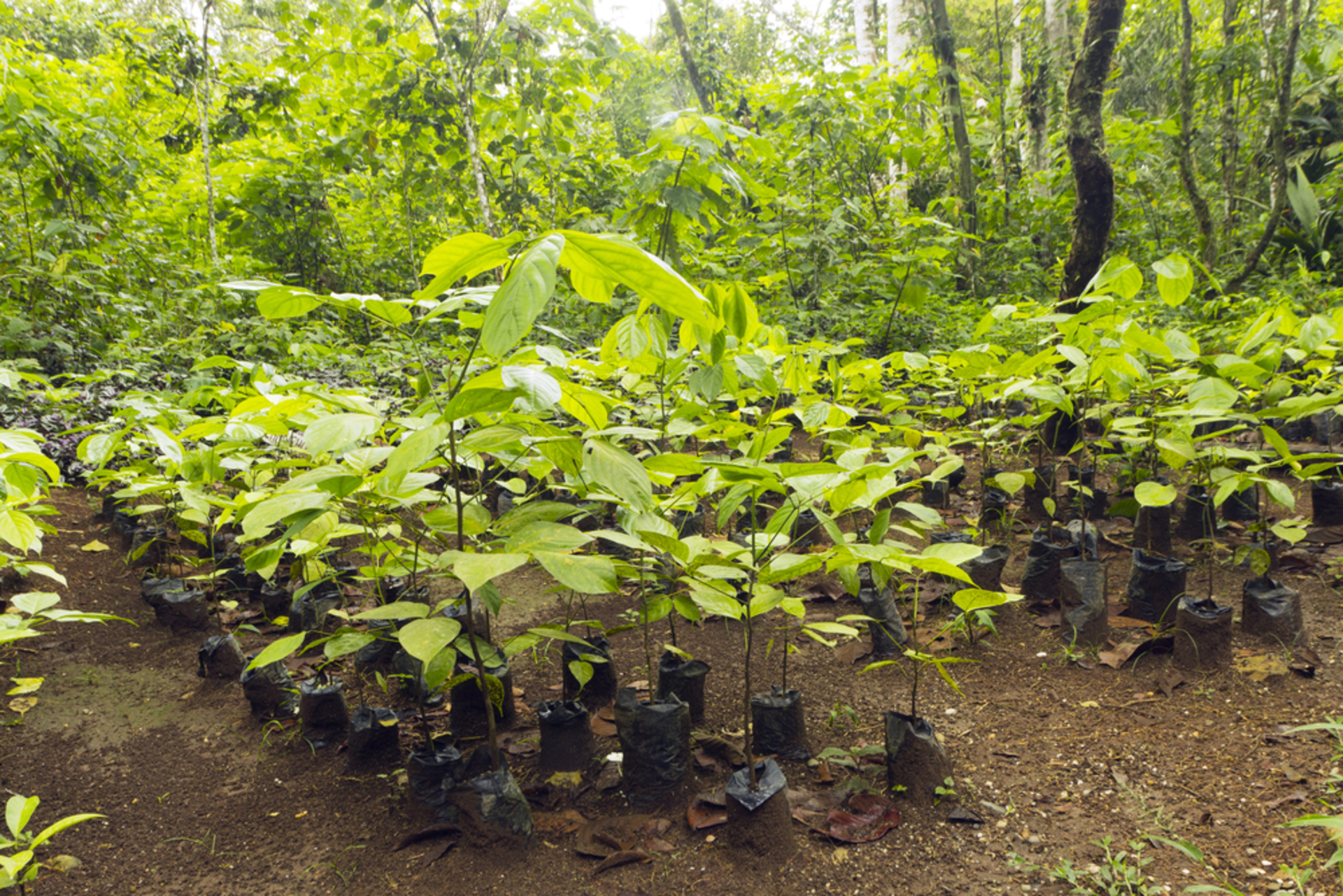
Afforestation instead of mitigation?
Are investments in forest protection and afforestation good alternatives to CO2 mitigation from private road transport? We show that their potential is limited and that priority should therefore be given to sectors of the economy that are difficult to decarbonize, such as air transport and parts of agriculture.
No climate protection without tropical forest protection, no tropical forest without climate protection
Tropical forests are essential stabilisers of the world climate. They store up to 844 billion tons of CO2 or 230 billion tons of carbon. This is a little less CO2 than the remaining global carbon budget that the world can emit while limiting climate change to 2°C. At the same time, tropical deforestation is responsible for 8% of global annual emissions. For comparison, this is more than the EU's total annual emissions. Nine countries (Indonesia, Brazil, Malaysia, Democratic Republic of Congo, Bolivia, Colombia, Peru, Mexico and Cambodia) are responsible for 77% of all emissions from tropical deforestation. Tropical forest conservation and afforestation are therefore essential for climate protection.
Limiting global warming is also indispensable for the conservation of tropical forests. Climate scientists consider the Amazon rainforest a tipping element of global climate. A warmer global climate reduces the amount of precipitation on which tropical forests depend on. This may trigger a self-reinforcing processes that transform the tropical ecosystem into a savannah, which in turn would have a strong impact on the climate.
Tropical forests are CO2 sinks
Because forests absorb CO2 from the atmosphere, investments towards forest protection and reforestation may offset emissions from sectors that are currently difficult to decarbonize.
However, investments in afforestation are no magic bullets. Tropical forests play a much more important role in climate protection than other types of forests because (1) they are acutely endangered, (2) they are critical stabilizers for the global climate, (3) they store about 2.7 to 3.5 times more carbon than other types of forests, and (4) because they are home to some peat bogs which, if dried out or burned, would release gigantic amounts of greenhouse gases.
Limited potential to offset emissions from other sectors
In principle, forest conservation and afforestation projects may compensate for failures to reduce greenhouse gas emissions in other sectors. However, their potential is limited. Priority should therefore be given to sectors that are difficult to decarbonize.
In order to achieve the 2°C target, the world cannot emit more than 1,000 billion tons of CO2 between 2011 and 2100. If the nationally determined contributions (NDCs), which all countries pledged in Paris in 2015 and which partly include the avoidance of deforestation, are met, total emissions will be limited to about 800 billion tons by 2030. Avoided emissions from deforestation can offset a maximum of 3.67 billion tons of CO2 per year. In comparison, the transport sector emits about 12 billion tons of CO2 anually without further climate protection measures. In comparison, the afforestation of 12 million square kilometers (four times the area of India) would remove about 500 billion tons of CO2 from the atmosphere by 2100. This gigantic reforestation would increase the CO2 budget available after 2030 from 200 to 700 billion tons of CO2. But even then, worldwide annual emissions would need to fall by 7% every year after 2030 to limit climate change to 2°C. This would entail enormous efforts in all sectors, which can only be curbed by greater emission reductions before 2030.

The role of offsets in the decarbonisation of transport
While decarbonisation in parts of the economy such as aviation or agriculture will remain difficult for the foreseeable future, which will make it necessary to offset emissions, new technologies and mobility concepts are available in the road transport sector (as well as in the electricity sector). Especially the combination of electric mobility, vehicle sharing services and autonomous driving is considered very promising. Investments in these areas are also accompanied by significant co-benefits such as better air quality, less noise, less congestion and less land use, which are particularly important for sustainable mobility. Given (i) the importance of emission reductions in the transport sector for meeting the 2°C climate target and (ii) the existing mitigation options in road transport, the adoption of short and medium term climate change mitigation measures in the road transport sector is therefore unavoidable. This is all the more true as the potential for emissions compensation is limited.
Key findings and policy implications
- Forest conservation and afforestation projects can be useful investments to offset emissions from sectors that are currently difficult to decarbonize.
- However, the areas available for emission compensation, especially from afforestation, are limited.
- In road transport, new technologies and mobility concepts are available for emission reductions and the sector therefore has an important role to play in meeting the 2°C climate target.
- Overall, there is no alternative to medium-term zero-emissions in private road transport.